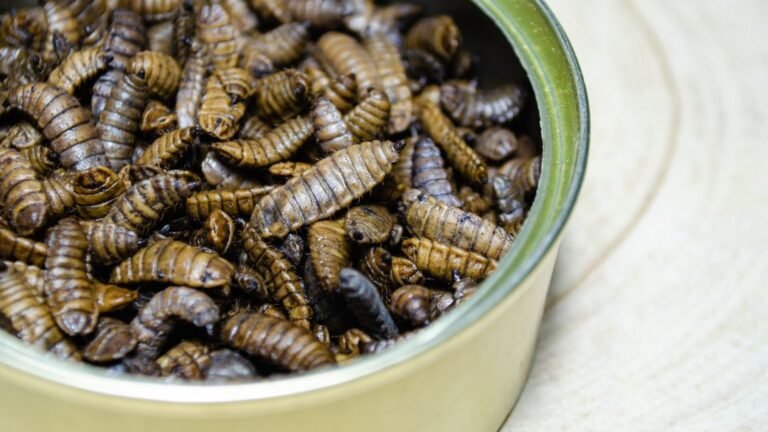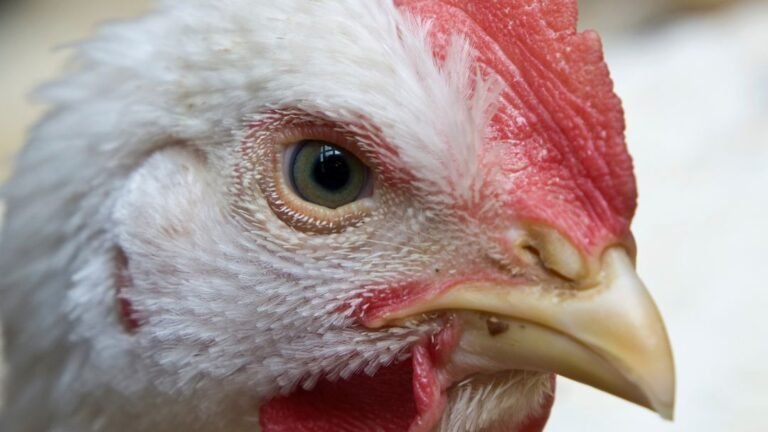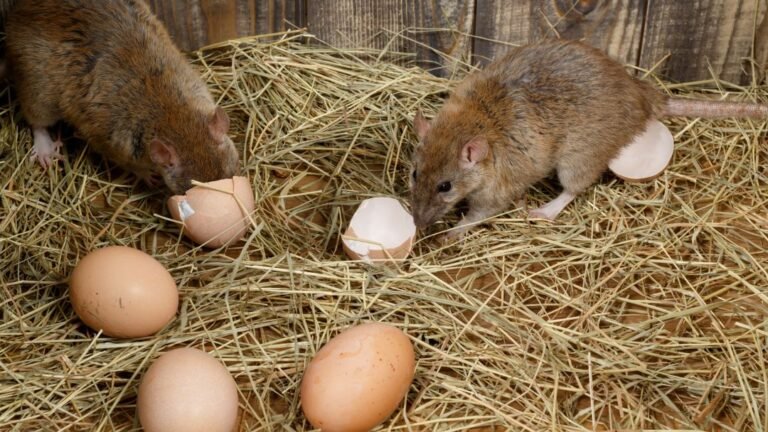Yes, chickens do have knees. Chickens, like other birds, have knees that are hidden beneath their feathers and bent in a backward direction.
Chickens are fascinating creatures that have long fascinated humans with their unique anatomy and behaviors. One interesting aspect of their anatomy is their knees. Yes, you read it right – chickens do have knees! However, unlike humans and many other animals, the knees of a chicken are not visible to the naked eye.
They are actually hidden beneath their feathers and bent in a backward direction. This design allows them to walk and scratch the ground without their knees being exposed. We will dive deeper into the topic of chicken knees, exploring their anatomy, functions, and how they contribute to the everyday life of these popular domestic birds. So, let’s unravel the mystery of chicken knees and discover what makes them truly unique!
The Anatomy Of A Chicken
Understanding the anatomy of a chicken is fascinating, especially when it comes to their legs. Chickens, like many other birds, have an interesting skeletal structure that allows them to walk, run, and scratch the ground with surprising agility. In this article, we will delve into the intricate details of a chicken’s anatomy, focusing specifically on their legs and the mystery surrounding their knees.
The Skeletal Structure Of A Chicken
A chicken’s skeletal structure is designed to support their body weight and facilitate their movements. Like all vertebrates, chickens have a backbone or vertebral column. The vertebral column provides support and protection for the spinal cord, allowing chickens to maintain proper posture and balance as they move around.
In addition to the vertebral column, a chicken’s skeletal structure includes ribs, wings, and legs. The legs are particularly interesting as they play a crucial role in a chicken’s mobility. Let’s dive deeper into the key joints and bones in a chicken’s leg.
Key Joints And Bones In A Chicken’s Leg
When it comes to a chicken’s leg, there are several important joints and bones worth exploring. Below, we outline each of these and their significance:
- Femur: The femur is the longest bone in a chicken’s leg and is equivalent to the thigh bone in humans. It connects the hip joint to the knee joint and provides stability and strength for the leg.
- Tibia: The tibia is the second-longest bone in a chicken’ leg and connects the knee joint to the hock joint. It provides support and acts as a lever for movement.
- Fibula: The fibula is a smaller bone that runs parallel to the tibia. It adds strength to the leg and helps in weight-bearing.
- Tarsus: The tarsus refers to a group of small bones that make up the ankle joint, also known as the hock joint. It allows for flexibility and range of motion in the leg.
- Metatarsals and Phalanges: These are the bones in a chicken’s foot and are responsible for providing support and balance.
Now that we have a good understanding of the key joints and bones in a chicken’s leg, let’s unravel the mystery behind chicken knees.
Unraveling The Mystery Behind Chicken Knees
You might be surprised to learn that chickens do not have knees in the same way humans do. The knee joint, as we are familiar with in our own legs, is not present in chickens. Instead, what we may perceive as a chicken’s knee is actually their ankle joint or hock joint.
This ankle joint, located between the tibia and the tarsus, allows for flexion and extension of the lower leg. The lack of a conventional knee joint gives chickens a unique anatomy that allows them to move and balance effectively.
In conclusion, chickens have a fascinating skeletal structure, particularly in their legs. Understanding the key joints and bones involved in their leg movements helps us appreciate their agility and adaptability in various environments. So, the next time you observe a chicken strutting around, remember the intricate anatomy at work beneath those feathered legs.
Debunking The Common Misconception
There is a common misconception that chickens do not have knees, but is that really the case? Let’s delve deeper into the anatomy of avian legs, explore the scientific classification of knee joints in animals, and address this misconception once and for all.
Understanding The Anatomy Of Avian Legs
Before we can address the question of whether chickens have knees, it’s important to understand the unique anatomy of avian legs. Birds have a significantly different bone structure compared to mammals, which can lead to some confusion when it comes to identifying their joints.
For instance, most mammals have long lower leg bones, known as the tibia and fibula, that articulate with a corresponding upper leg bone, the femur, at the knee joint. In birds, however, the leg bones are actually fused together, resulting in a single bone called the tibiotarsus. This means that birds have a different joint structure compared to mammals.
Exploring The Scientific Classification Of Knee Joints In Animals
According to the scientific classification of joints, the knee joint is defined as a hinge joint, allowing for movement in only one plane. This type of joint is found in many animals, including mammals, birds, and reptiles. However, the specific structures and movements of knee joints can vary across species.
In birds, the equivalent of the knee joint is located higher up on the leg, closer to the body. It is formed by the articulation between the femur and the tibiotarsus. While the range of motion in avian knee joints may differ from that of mammals, they still serve a similar purpose in allowing the leg to bend and flex.
Addressing The Misconception About Chicken Knees
So, do chickens have knees? The answer is yes! Chickens, like all birds, do have knee joints, although they are not located in the same place as in mammals. The knee joint in chickens is higher up on the leg and formed by the articulation between the femur and the tibiotarsus.
This misconception may have arisen due to the different bone structure and location of the knee joint in birds, leading some people to erroneously believe that chickens lack knees altogether. However, a closer examination of avian anatomy reveals that chickens do indeed possess knee joints, albeit in a different form than what we typically associate with mammals.
Next time you observe a chicken walking or running, take a moment to appreciate its remarkable anatomy, including its knees which enable it to navigate its surroundings with agility and grace.
The Unique Adaptation Of Chicken Legs
The Unique Adaptation of Chicken Legs
Evolutionary Adaptations In Chicken Legs
When it comes to the evolutionary adaptations in chicken legs, it is fascinating to observe how these birds have developed a unique set of characteristics to navigate their environment efficiently. Over the years, chickens have evolved to have limbs that are specifically adapted for their lifestyle.
One of the most noticeable adaptations in chicken legs is their ability to walk and run. Chickens possess a strong and muscular leg structure that enables them to move swiftly on both land and in some cases, short flights. This characteristic has been developed through years of evolution, allowing them to escape predators, forage for food, and establish their place within their social hierarchy.
Examining The Role Of Ligaments And Tendons In Movement
Understanding the role of ligaments and tendons is crucial in comprehending the unique movement patterns of chicken legs. Ligaments are tough, fibrous bands of connective tissue that connect bones to other bones, providing stability and preventing dislocation. Tendons, on the other hand, are cord-like structures that connect muscles to bones, facilitating movement by transmitting the force exerted by the muscles onto the bones.
In the case of chicken legs, the ligaments and tendons work in harmony to enable fluid and efficient movement. The ligaments not only provide stability to the joints but also restrict excessive movement, ensuring that the chicken’s legs maintain optimal alignment. Tendons, being the primary drivers of movement, contract and release to produce a wide range of motions, allowing chickens to walk, run, scratch, and even jump.
Shedding Light On The Peculiar Anatomy Of Chicken Legs
Taking a closer look at the peculiar anatomy of chicken legs reveals some interesting adaptations that contribute to their overall efficiency. One such adaptation is the positioning of the knee joint, situated high up the leg. This unique placement creates a more compact leg structure, reducing the amount of energy required for movement. It also prevents the legs from splaying outwards, which could impede walking ability.
Furthermore, the muscles in chicken legs are proportionally larger and more developed compared to other birds. This muscular structure contributes to the strength and power that chickens possess, enabling them to engage in activities that require bursts of speed and agility. Combined with their ligament and tendon structure, the peculiar anatomy of chicken legs ensures optimal functionality for their specific needs.
In conclusion, the evolution of chicken legs has resulted in highly efficient and specialized adaptations. From the ligaments and tendons that facilitate movement to the peculiar anatomy that maximizes efficiency, these birds have honed their legs for a life on the move. Understanding and appreciating the unique adaptation of chicken legs not only provides insights into the marvels of evolution but also highlights the extraordinary capabilities of these seemingly ordinary creatures.
Alternative Joints In Chickens
The Mechanics Of Alternative Joints In Avian Legs
Have you ever wondered about the peculiar joint structure in a chicken’s leg? Chickens, unlike humans and many other animals, do not have traditional knee joints. Instead, they possess alternative joints that allow for their unique modes of movement. Understanding the mechanics of these alternative joints can help shed light on the fascinating locomotion capabilities of these feathered creatures.
Exploring The Functions Of Different Joints In A Chicken’s Leg
Let’s delve deeper into the different joints present in a chicken’s leg and how they contribute to their overall movement. First and foremost, we have the hip joint that grants chickens the ability to extend their leg backward, propelling them forward as they walk or run. This joint acts as the primary pivot point for locomotion.
Next, we have the stifle joint, which is commonly mistaken for a chicken’s knee but serves a different purpose. The stifle joint functions as a hinge joint that allows the leg to flex and extend, providing stability and control during movements such as pecking or scratching the ground. It is essential for their daily activities in the coop.
The tibiotarsal joint is another critical component of a chicken’s leg structure. This joint operates as a modified ankle joint and primarily enables the bird to flex and extend its lower leg, giving it the ability to perch on branches or roost at night. This joint plays a crucial role in their daily routines and roosting habits, ensuring their safety and comfort.
Lastly, the intertarsal joint, situated close to the foot, serves as a hinge joint that facilitates flexion and extension of the toes. This joint gives chickens the advantage of gripping different surfaces securely, making them exceptional climbers.
Comparing Chicken Knees With Other Avian Joints
Now that we have explored the mechanics and functions of the different joints in a chicken’s leg, let’s compare them with those of other avian species. While some birds, such as ducks and geese, possess more traditional knee joints like humans, chickens and other ground-dwelling birds have evolved alternative joint structures to suit their specific needs and lifestyles. These adaptations enable them to excel in activities like foraging, perching, and even escaping from predators with astounding agility.
In conclusion, the alternative joints in a chicken’s leg may not resemble the knees we are familiar with, but they play a vital role in their mobility and survival. Understanding how these joints function provides insight into the incredible adaptation and versatility of these feathered creatures, showcasing nature’s ingenuity at its finest.
The Fascinating Facts About Chicken Legs
How Chickens Walk And Run Without Knees
When we think of animals with agile movements, chickens might not be the first ones to come to mind. However, these birds possess a unique anatomical structure that allows them to walk and run gracefully, even without knees! To understand how chickens manage this, we need to delve into the fascinating world of chicken legs.
Contrary to popular belief, chickens do have knees, but their knees are not visible on the outside. Instead, their knee joints are tucked up close to their body, hidden beneath their feathers and skin. The visible joint we often associate with a chicken’s “knee” is actually their ankle joint. This hidden knee joint is situated higher up on the bird’s leg and is covered by the thigh feathers. So, how do chickens walk and run if their knees are not easily visible?
Discovering The Incredible Agility Of Chickens
Chickens belong to a group of birds known as ground-dwelling birds. Their leg structure is perfectly designed for terrestrial locomotion, enabling them to move with agility. Their legs are positioned vertically beneath their body, creating an efficient stride and balance. Unlike humans, who utilize a bending motion at the knee joint, chickens rely on a completely straight leg movement, giving them a unique gait.
The primary reason chickens do not require visible knees to walk and run lies in their skeletal structure. Their leg bones are longer and more slender compared to other animals, providing them with the necessary flexibility for movement. Additionally, their thigh bones are fused with their lower leg bones, creating a rigid structure that eliminates the need for a visible knee joint.
Unveiling The Secrets Behind Chicken Leg Movement
To unravel the mystery behind the flexibility and agility of chickens, we must examine their tendons. Tendons play a crucial role in a chicken’s leg movement, allowing them to extend and flex their lower legs without the need for a visible knee joint. These tendons act as pulleys, working in conjunction with the muscles to create the desired range of motion.
Chickens have a unique tendon arrangement that facilitates their straight leg movement. The powerful tendon on the back of their leg is responsible for extending the lower leg, propelling them forward. On the other hand, a shorter, equally robust tendon at the front of their leg allows for flexion, facilitating smooth movement as they traverse their environment.
In conclusion, although chickens do possess hidden knees, their unique leg structure and tendon arrangement allow them to walk and run without the need for visible knees. Their straight leg movements, combined with the efficiency of their bone structure, contribute to their incredible agility. Next time you observe a chicken strutting around, take a closer look at their legs, and marvel at the fascinating adaptations that enable these birds to move with such grace and precision.
Conclusion
Chickens do have knees, but they are not as visible as in other animals. While chickens have elongated drumstick bones, their knee joints are hidden within their bodies. Understanding the anatomy of chickens can help us appreciate their unique structure and movement.
So, the next time someone asks if chickens have knees, you can confidently say, “Yes, they do, but they’re just not easily seen!”




